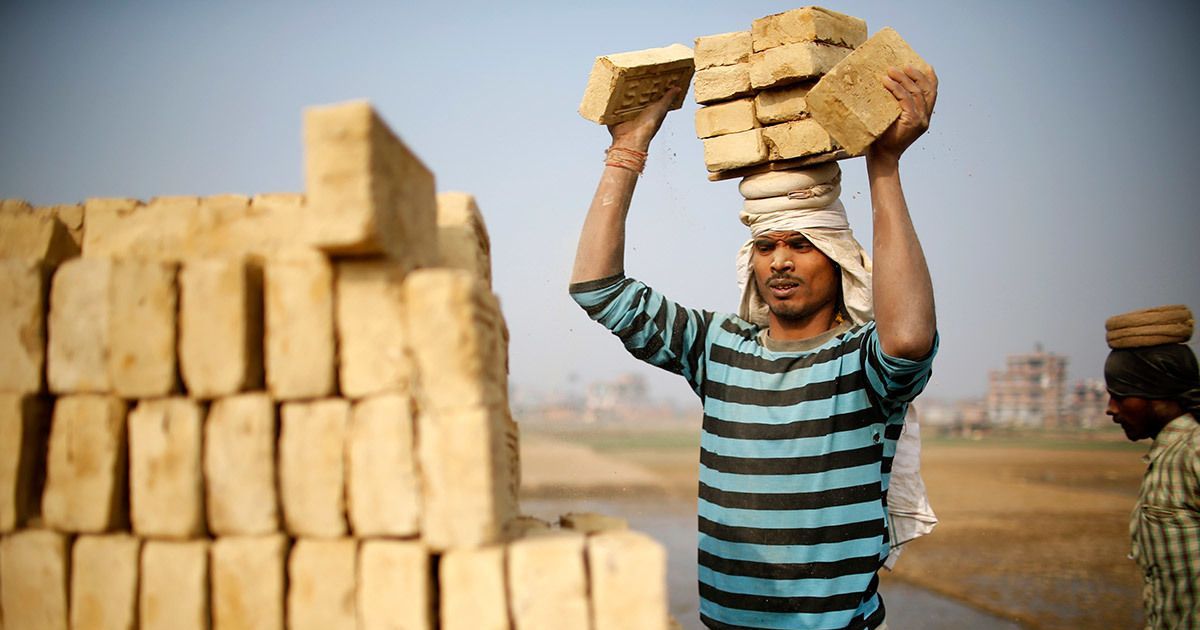Bonded labourers taking advantage of the practice by running a racket, says SC judge Hemant Gupta
The judge claimed the labourers are not in debt bondage as they borrow money, spend it and leave the contractual work.

Supreme Court judge Hemant Gupta on Wednesday commented that a racket was being run in India on the pretext of bonded labour as the labourers were taking advantage of the practice, reported Bar and Bench.
“Do you know who are bonded labourers,” asked Justice Gupta at a hearing. “They are not bonded... They take money and come there and are engaged by brick kilns. They come from backward areas. They take money and eat the money and then resign. This is a racket. These labourers only take advantage of this bonded labourer thing.”
Bonder labour is a practice in which a person is forced to work to pay off a debt. In many cases, these labourers are not paid compensation while they work and also have no control over their debt, according to human rights organisation Anti-Slavery International.
Gupta made the comments at the hearing of a plea seeking the court’s directions to investigate allegations of rape and other offences made by a woman who worked as a bonded labourer in Jammu and Kashmir. The plea, filed by social activist Agnivesh in 2012, also demanded that other bonded labourers in the erstwhile state be identified and rehabilitated.
At Wednesday’s hearing, Advocate Pooja Sharma, appearing for the woman who died in 2020, submitted that many of the bonded labourers have faced sexual harassment and not been paid any compensation even after 10 years.
Noting the government has filed a detailed report on the petition, the bench, also comprising Justice Sudhanshu Dhulia, said that the Jammu and Kashmir administration will take remedial steps.
According to the petition, the woman and her husband – both bonded labourers – wanted to return to their native state but the contractor whom they worked for, refused to relieve them unless they paid him Rs 3 lakh, reported PTI.
While the husband managed to escape, the contractor kept the woman wife and her child under confinement. After the husband escaped, the contractors and others repeatedly raped the woman, the petition alleged.
The woman and her son were later shifted to a rehabilitation home after an non-governmental organisation had intervened.
Also read:
Agnivesh (1939-2020): The man who tried to reclaim the colour saffron from political opportunists
Other comments by Justice Hemant Gupta
Justice Gupta has been in the news for making other other controversial comments.
In the hijab ban case being heard by the Supreme Court, Advocate Devadatt Kamat, appearing for the petitioners, had argued on Wednesday that the right to dress is a fundamental right guaranteed to citizens under Article 19 of the Constitution.
In response, Justice Gupta had said Kamat was stretching his argument to “illogical ends”.
“Right to dress will include right to undress also?” Gupta had added.
Kamat had also said that many students wear rudraksh (prayer bead) or cross as a religious symbol along with their school uniform. To this, Gupta said that the rudraksh and cross cannot be compared to hijab.
“That is worn inside the shirt,” Gupta had said. “Nobody is going to lift the shirt and see if someone is wearing a rudraksh.”
At an earlier hearing in the same case, Senior Advocate Sanjay Hegde, appearing for the petitioners, had argued that it was wrong to tell women they would have no control over their own concept of modesty and what they can wear, reported Live Law.
Gupta had retorted saying that different places required different dress codes such as lawyers are barred from wearing jeans.
To this, Hegde argued that context was necessary to decide on such matters. In the present case, the advocate told the court, the context was access to education to government college that is funded by everyone.
Gupta then said that not everyone pays for the college as only 4% of the population pay taxes, .
“Direct tax, yes,” Hegde had replied. “But everyone pays indirect tax.”









